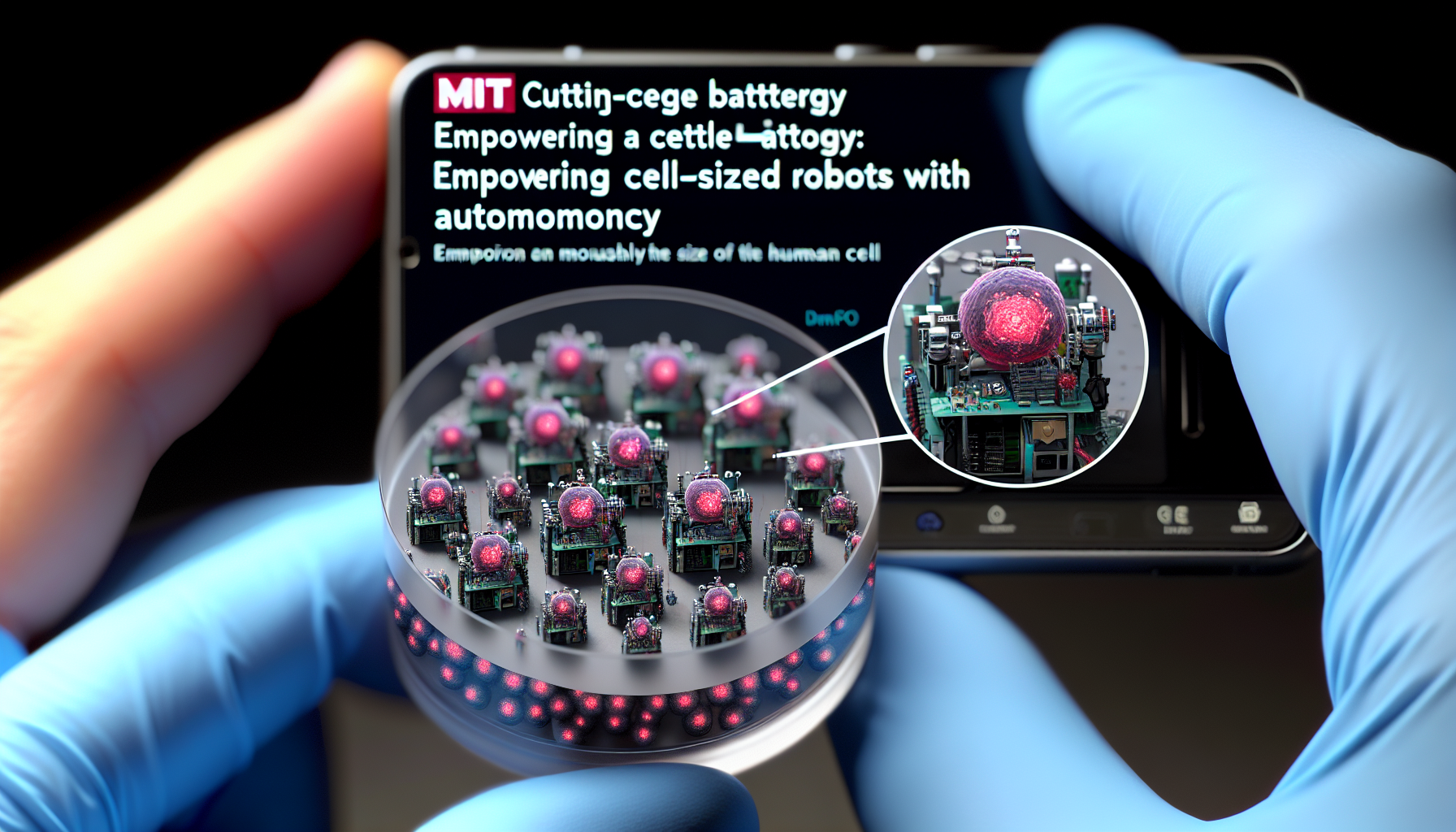MIT Engineers Design Tiny Batteries to Power Cell-Sized Robots: A Revolution in Miniature Robotics

Introduction to the Future of Miniature Robotics
Imagine robots so small that they can navigate within our blood vessels to deliver drugs or detect leaks in gas pipelines. Thanks to the team of engineers at the Massachusetts Institute of Technology (MIT), this futuristic vision is closer to becoming a reality. On August 16, 2024, MIT announced their breakthrough in the development of zinc-air microbatteries that are tinier than a grain of sand. These tiny batteries could be the key to empowering cell-sized, autonomous robots.
What Makes Zinc-Air Microbatteries Special?
The new zinc-air batteries designed by MIT's team are incredibly compact, measuring just 0.1 millimeters in length and 0.002 millimeters in thickness—about the thickness of a human hair. These batteries capture oxygen from the air and use it to oxidize zinc, generating a current with a potential of up to 1 volt.
Michael Strano, the Carbon P. Dubbs Professor of Chemical Engineering at MIT, emphasizes the transformative potential of these batteries:
"We think this is going to be very enabling for robotics," Strano said. "We're building robotic functions onto the battery and starting to put these components together into devices."
These words underscore the excitement around this innovation, which aims to change the landscape of miniature robotics.
Powering Autonomy in Tiny Robots
Previously, researchers have explored using solar power to energize microscale devices. However, this approach has its limitations as it requires continuous exposure to a light source. By incorporating a power source like a zinc-air battery, robots gain greater autonomy, allowing them to operate in environments without the need for external energy inputs.
Strano points out:
"The marionette systems don't really need a battery because they're getting all the energy they need from outside," Strano explains. "But if you want a small robot to be able to get into spaces that you couldn't access otherwise, it needs to have a greater level of autonomy. A battery is essential for something that's not going to be tethered to the outside world."
Applications and Future Prospects
Powered by these innovative batteries, MIT's team has already demonstrated the capability of these cells. They can energize tiny devices such as a robotic arm actuator, a memristor (an electronic component that can store memories), and even a clock circuit.
Additionally, the batteries have been shown to power sensors that change their electrical resistance when encountering environmental chemicals. These sensors are made from materials like atomically thin molybdenum disulfide and carbon nanotubes.
Ge Zhang PhD '22 and Sungyun Yang, both affiliated with MIT, are the lead authors of the groundbreaking paper published in Science Robotics. They highlight the potential for using these innovations in creating robotic swarms that could be injected into the human body to deliver drugs like insulin directly to target sites.
Strano adds:
"This is going to form the core of a lot of our robotic efforts. You can build a robot around an energy source, sort of like you can build an electric car around the battery."
The Road Ahead
Looking to the future, the research team aims to further enhance the voltage of these microbatteries, which might unlock even more applications. Plans are already in motion to integrate these batteries directly into robots, potentially fabricating biocompatible robots that can disintegrate once their task is accomplished.
Conclusion
In essence, the advancements in zinc-air microbatteries at MIT are propelling the field of miniature robotics forward at an unprecedented rate. These tiny yet mighty power sources pave the way for incredible innovations that could revolutionize healthcare, industrial inspections, and beyond.
For more in-depth information, refer to the original study by Ge Zhang, Sungyun Yang, and other contributors in Science Robotics. Check out the full details on ScienceDaily.
Source: Massachusetts Institute of Technology, original written by Anne Trafton.
Explore further on robotics and energy technology by following the latest updates. Don't forget to sign up for our newsletter and stay connected with us on social media via Facebook and Twitter.
Related Topics
- Robotics Research: From robotic surgery to industrial robots, discover the latest in the fascinating world of robotics.
- Energy Technology: Learn more about cutting-edge innovations shaping the future of energy storage and consumption.
- Artificial Intelligence: Stay updated on groundbreaking advancements in AI that are redefining what's possible.
Stay tuned for more exciting updates from the world of science and technology!



